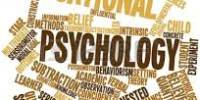Acute stress disorder (ASD) is a strong and unpleasant reaction that occurs in the weeks after a traumatic event. ASD is a psychological response to a terrifying, traumatic, or surprising experience. It is also known as acute stress reaction, psychological shock, mental shock, or simply shock. Symptoms usually last a month or less. If not addressed properly, it may result in delayed stress reactions (better known as post-traumatic stress disorder, or PTSD). Posttraumatic stress disorder is diagnosed when symptoms persist for more than one month (PTSD).
You may develop an anxiety disorder known as acute stress disorder in the weeks following a traumatic event (ASD). ASD usually manifests itself within one month of a traumatic event. It lasts at least three days and can persist for up to one month. People with ASD have symptoms similar to those seen in post-traumatic stress disorder (PTSD).
Types
- Sympathetic
The release of excessive adrenaline and norepinephrine into the nervous system causes sympathetic acute stress disorder. These hormones can cause a person’s pulse and respiratory rate to increase, dilate pupils, and temporarily mask pain. This type of ASD evolved as an evolutionary benefit to aid humans in surviving dangerous situations. Even in the face of severe injury, the “fight or flight” response may allow for temporarily enhanced physical output. Other physical illnesses, on the other hand, become more difficult to diagnose because ASD masks pain and other vital signs that would otherwise be symptomatic.
- Parasympathetic
Feeling faint and nauseous are symptoms of parasympathetic acute stress disorder. The sight of blood frequently triggers this response. Acetylcholine is released by the body during this stress response. This reaction, in many ways, is the polar opposite of the sympathetic response in that it slows the heart rate and can cause the patient to regurgitate or temporarily lose consciousness. The evolutionary significance of this is unknown, though it may have allowed prey to appear dead in order to avoid being eaten.
Signs and symptoms
According to the DSM-IV, acute stress disorder must be accompanied by dissociative symptoms, which distinguishes it from post-traumatic stress disorder. A sense of numbing or detachment from emotional reactions, a sense of physical detachment – such as seeing oneself from another perspective – decreased awareness of one’s surroundings, the perception that one’s environment is unreal or dreamlike, and the inability to recall critical aspects of the traumatic event are all dissociative symptoms (dissociative amnesia).
ASD can also be found in the following symptom clusters: intrusion, negative mood, disassociation, avoidance of distressing memories, and emotional arousal. Intrusion symptoms include recurring and distressing dreams, flashbacks, or memories of the traumatic event, as well as somatic symptoms. Sleep disturbances, hypervigilance, difficulties with concentration, the more common startle response, and irritability are all symptoms of emotional arousal.
Complications
Acute stress can cause a variety of complications. Acute stress can lead to depression, anxiety, mood disorders, and substance abuse issues. Untreated autism spectrum disorder can also lead to the development of post-traumatic stress disorder.
Causes
There are various theoretical perspectives on trauma response, including cognitive, biological, and psycho-biological perspectives. While these theories are PTSD-specific, they are still useful in understanding acute stress disorder because the two disorders share many symptoms. According to a recent study, even a single stressful event can have long-term effects on cognitive function. This finding calls into question the traditional distinction between the effects of acute and chronic stress.
















